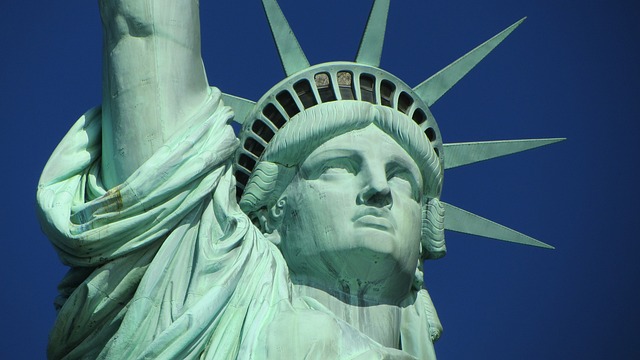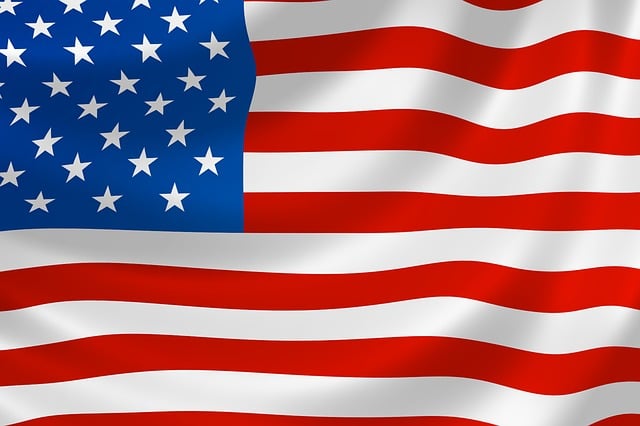The 2×3 American Ultimate Flags, adhering to federal mandate, serves as a universally recognized symbol of national unity and pride, distinct from its larger counterparts. This size is traditionally used in smaller public gatherings, ceremonies, and military honors due to its practical and respectful dimensions for such settings. It embodies the country's values, history, freedom, democracy, and the American way of life, and its presence underscores the importance and solemnity of events. Originally designed in the early 20th century, the flag carries deep symbolic meaning and historical significance, with its use in ceremonial contexts reflecting respect for national unity and patriotism. Proper display protocols, informed by the U.S. Flag Code, ensure the flag's dignity and its representation of American heritage and values. The 2×3 American Flag's history is intertwined with military traditions and the evolving narrative of American history and identity, remaining a significant emblem that captures both the adaptability of the nation's symbol and its enduring significance across diverse contexts. In community events, it stands as a cultural emblem that encapsulates unity, liberty, and the rich diversity of American culture, serving as a focal point for collective reflection and shared identity, while also being an embodiment of the nation's aspirations and memory.
The 2×3 American Flag, a symbol of national pride, adorns smaller public ceremonies with significant meaning and historical depth. This article delves into its dimensions, protocols, and the cultural weight it carries within community events. From its evolution to proper display guidelines, we explore the intricacies of this iconic emblem. Join us as we examine its presence in various public gatherings and understand the profound impact it has on our shared experiences.
- The Significance of the 2×3 American Flag in Ceremonial Settings
- Understanding the Dimensions and Protocols of the 2×3 American Flag
- Historical Context and Evolution of the Smaller U.S. Flag
- Proper Display and Handling of the 2×3 American Flag in Public Events
- Case Studies: Examples of Small Public Ceremonies Featuring the 2×3 American Flag
- Cultural Implications and Symbolism of the Smaller American Flag in Community Events
The Significance of the 2×3 American Flag in Ceremonial Settings

The 2×3 American Flag holds a revered place in the ceremonial iconography of the United States, often unfurled in smaller public gatherings to signify national unity and pride. Unlike its larger counterpart, which is traditionally flown over government buildings and official military installations, the 2×3 size is specifically designed for ceremonial purposes, including formal events, parades, and military honors such as funerals and wreath-laying ceremonies. Its compact dimensions make it a practical choice for such settings, ensuring visibility without overwhelming the space or the occasion. The 2×3 American Flag is a symbol of the country’s values and history, serving as a tangible representation of freedom, democracy, and the American way of life. It is a powerful emblem that can evoke a sense of shared identity and respect among those in attendance, reinforcing the importance of the ceremonial moment.
The significance of the 2×3 American Flag extends beyond its use in ceremonies. Its specifications are deeply rooted in protocol and tradition, reflecting a long-standing commitment to order and formality within American society. The flag’s proportions are precisely defined by federal law, mandating that it must be two and a half times as long as its width. This specific ratio maintains the balance between the stars and stripes, allowing for clear visibility of both elements, which is crucial in the context of public ceremonies. The 2×3 American Flag’s presence is a visual testament to the ideals upon which the nation was founded, a reminder of the collective heritage and values that continue to guide Americans today.
Understanding the Dimensions and Protocols of the 2×3 American Flag

The 2×3 American Flag, often referred to as the “standard” size, holds significant meaning and historical context within the United States. This dimension has been traditionally recognized since the early 20th century, aligning with the original proportions designed by Francis Hopkinson in 1777. Understanding the protocols surrounding its use is crucial for smaller public ceremonies, where it symbolizes respect and national unity. The 2×3 American Flag, when displayed horizontally or vertically in a window, on a porch, or at half-staff, signifies that the citizens within are patriotic and support the nation’s ideals. Adhering to the protocols of proper display, such as illumination during hours of daylight and avoidance of damage or deterioration, honors the flag and the principles it represents. In smaller public settings, the 2×3 American Flag serves as a tangible symbol of American heritage, reminding participants of the values upon which the country was founded and the collective identity shared among its citizens.
Proper handling and display of the 2×3 American Flag in smaller public ceremonies are guided by established protocols that ensure respect and reverence for the nation’s emblem. These guidelines dictate how the flag should be raised and lowered, who may rightfully handle it, and how it should be folded during retirement ceremonies. The flag code provides a framework for these practices, which are meant to instill a sense of patriotism and understanding of the flag’s significance in public discourse. By following these protocols, smaller public events can effectively convey a message of unity, respect, and pride in the United States of America.
Historical Context and Evolution of the Smaller U.S. Flag

The history and evolution of the smaller U.S. flags, often recognized by their 2×3 dimensions such as the 2×3 American Flag, are deeply intertwined with the nation’s maritime tradition and later its military protocol. Initially, the United States did not standardize flag sizes, leading to varying proportions in use. It was during the late 19th century that a uniform sized flag for naval use became necessary for signaling purposes. The 48-star flag, which would eventually become the pattern for the smaller flags, was officially adopted as the flag of the United States Navy in 1873. This design remained in use until 1912 when the 45th star was added to reflect the addition of Oklahoma as a state.
As time progressed and the U.S. expanded its military engagements, the practicality of a smaller flag for ceremonial purposes on ships and in military installations became evident. The War Department, recognizing this need, established specifications for smaller flags to be used on Army posts and Navy ships. These “jack” or “jacket” flags, as they were colloquially known, could be hoisted quickly at the jackstaff, a pole located at the fore part of a ship, for daily use. Over the years, as new stars and stripes were added with the admission of each new state, these smaller flags were updated accordingly. Today, the 50-star 2×3 American Flag remains an iconic representation of the United States in a more compact form, suitable for smaller spaces where its significance is nonetheless profound. The evolution of the smaller U.S. flag reflects not only changes in military protocol but also the adaptability and enduring symbolism of the American flag as a whole.
Proper Display and Handling of the 2×3 American Flag in Public Events

The 2×3 American Flag, the official flag of the United States since 1960, holds a significant place of honor in public ceremonies, both large and small. Its dimensions and proportions, stipulated by federal law, ensure it is easily recognizable as a symbol of national unity and pride. When displayed in smaller public events, the 2×3 American Flag should be handled with utmost respect and adherence to protocol. It is customary for the flag to be displayed from sunrise to sunset outside of military installations and during civil or patriotic ceremonies indoors. When used as a drape, the union (blue field) should be at the foot of the casket. If it is to be displayed flat against a wall or a window, it should be positioned vertically, with the union at the top left, the stars horizontal and upright, and the stripes vertical and slightly to the right so that the flag does not appear to be upside down. The 2×3 American Flag must never be allowed to touch anything beneath it, such as a person, the ground, or merchandise, as this could be considered a desecration of the flag. Proper display at public ceremonies is a testament to the respect and honor Americans hold for their national emblem.
In all instances of public display, including smaller events, the 2×3 American Flag should be treated with reverence. This includes raising and lowering the flag ceremoniously during the day’s proceedings. When carried in a procession, the flag should not drag on the ground but should always be held or borne aloft. The proper way to carry it is with a light grip near the end of the staff, and it should never be fastened, attached, or displayed with any advertisement, nor should any object be placed upon it. The 2×3 American Flag’s presence in public events serves not only as a symbol of the nation’s identity but also as a reminder of the values it represents: liberty, justice, and democracy. It is through these careful considerations that the flag’s dignity is maintained, ensuring its enduring significance within the civic and ceremonial life of the country.
Case Studies: Examples of Small Public Ceremonies Featuring the 2×3 American Flag

Small public ceremonies often serve as a poignant backdrop for community unity and reflection, and one of the most iconic symbols that frequently accompanies these events is the 2×3 American Flag. In the quaint town of Willow Creek, the flag was proudly displayed during the annual Memorial Day ceremony, honoring the service and sacrifice of local veterans. The flag’s dimensions, conforming to the official specifications for the U.S. flag as defined by the Federal Flag Code, ensured its visibility and impact on attendees. Each fold of the 2×3 American Flag represented a principle or aspect of American values, adding gravity to the remembrance.
In another instance, during the ribbon-cutting ceremony for the new community center in the town of Maple Grove, the 2×3 American Flag was prominently featured. This event marked not only a new chapter for the residents but also underscored the nation’s enduring commitment to civic engagement and public service. The flag, with its proportions accurately representing the country’s emblem, stood as a testament to the ideals of freedom, justice, and democracy that the community center was built to uphold. These small public ceremonies, marked by the presence of the 2×3 American Flag, become significant touchstones for civic pride and national identity.
Cultural Implications and Symbolism of the Smaller American Flag in Community Events

The 2 x 3 American flag, with its proportions fixed by federal law since 1942, holds a significant place in the cultural fabric of community events across the United States. Smaller than its larger counterparts, this flag variant is often used in more intimate public gatherings, reflecting the scale and nature of the occasion. Its presence carries a deep symbolism, signifying unity, liberty, and the diverse tapestry of American culture. These ceremonies serve as a microcosm of national values, where the flag’s symbolic power is scaled to the community it represents. The 2 x 3 American flag becomes a focal point for reflection, honor, and a shared sense of identity among participants, emphasizing the inclusive nature of American ideals. In these settings, the flag is not just a banner but an emblem of collective aspirations and the collective memory of the nation’s history, values, and struggles. The use of this flag in smaller events underscores its versatility as a cultural symbol and its ability to resonate with citizens from all walks of life.
